
Back Pain From Standing: What You Can Do About It
Table of Contents
If your back starts to ache halfway through your shift—or right when you clock out—it’s not just in your head. Standing for hours at work can put real strain on your body, especially your lower back.
Whether you’re working retail, managing a kitchen, or using a sit-stand desk in the office, this kind of back pain from standing at work is more common than you might think. Over time, the strain builds, especially in the lower back, and what starts as a dull discomfort can turn into extreme back pain when standing up.
Let’s take a look at why this happens, how to spot early signs, and—most importantly—what you can do to prevent or relieve that soreness from the back pain from standing at work and get back to standing strong.

Why Standing Can Cause Back Pain
Standing sounds simple, but when your body holds the same position for long stretches, especially on hard surfaces, it starts to protest.
When you stand, your spine bears the weight of your upper body, and the muscles surrounding your core and back work to keep you upright and balanced. These muscles, especially in the lower back, aren’t designed to stay “on” constantly without relief. Over time, this static load causes muscle fatigue and poor circulation, which can lead to soreness, stiffness, and even inflammation.
On top of that, most of us don’t stand with perfect posture. It’s common to shift your weight to one leg, lean forward slightly, or arch your back—sometimes without even realizing it. These imbalances force certain muscles to overwork while others weaken, setting the stage for chronic back discomfort.
Here’s what contributes to the back pain from standing at work:
- Spinal compression: Gravity compresses the discs between your vertebrae, especially if your core muscles aren’t actively engaged.
- Muscle fatigue: Supporting muscles in your back, legs, and hips tire from prolonged contraction.
- Joint stress: Knees, hips, and ankles can stiffen or lock when you don’t move enough, affecting your posture and balance.
- Reduced circulation: Limited movement slows blood flow, which can increase inflammation and prolong recovery time.
It’s no surprise that many workers experience lower back pain from standing at work, especially by the end of the day. And if you’ve ever wondered, “Why does my back hurt from standing too long?”, the answer is: your body isn’t getting the movement, support, or rest it needs.
In short, standing isn’t bad, but standing still for too long without support or movement definitely is.
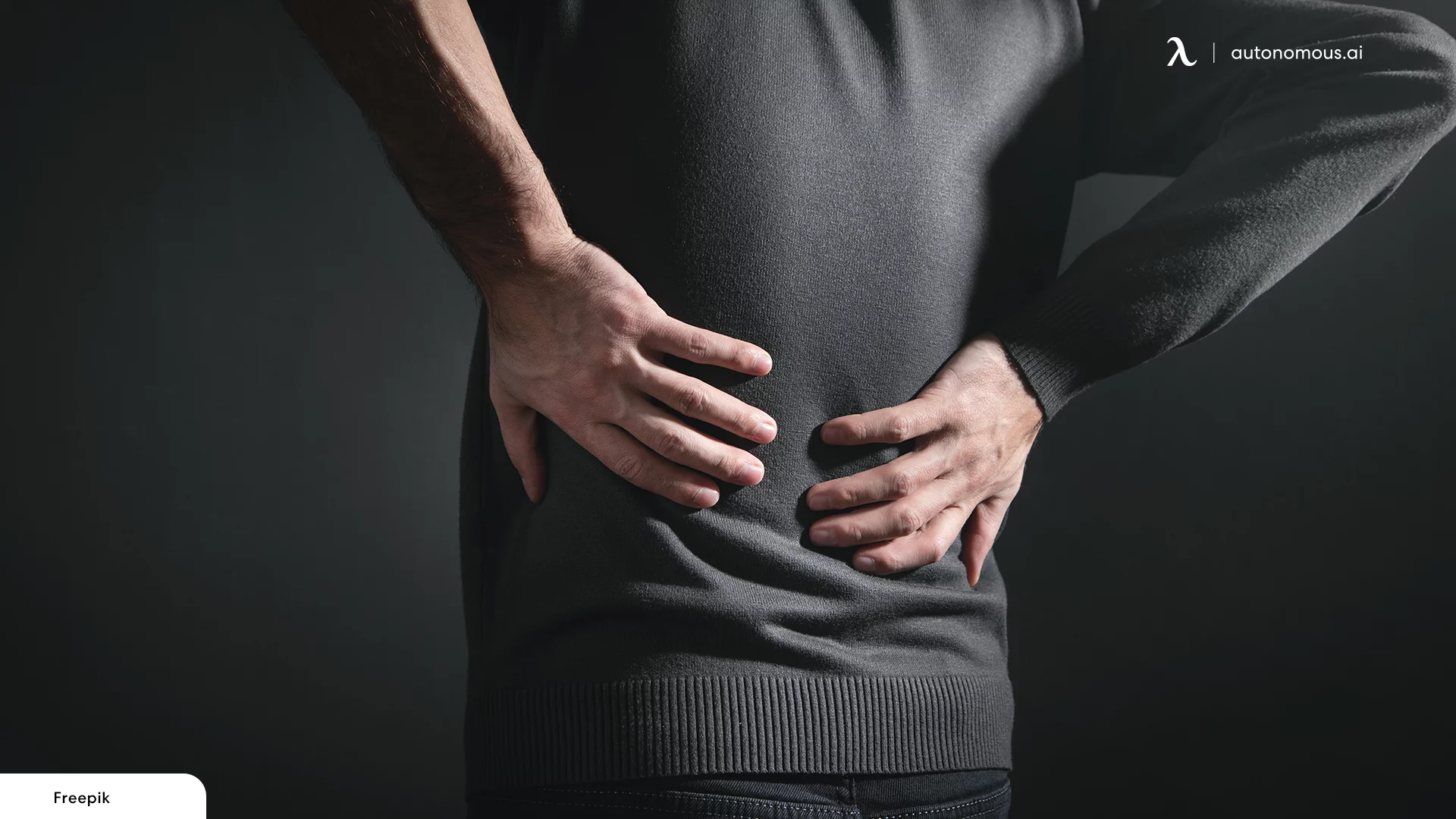
Symptoms To Watch For
The back pain from standing at work tends to creep up gradually. It might feel like simple fatigue at first, but ignoring those early warning signs can lead to chronic discomfort or even injury.
Here are some common symptoms of back pain from standing all day at work to look out for:
- Aching or dull pain in the lower back: This is the most frequently reported issue. It may feel like your back is tight, heavy, or stiff—especially after several hours on your feet.
- Burning or pressure in the mid-back: This can result from postural strain or from trying to keep your balance while you stand.
- Pain that gets worse toward the end of the day: If the discomfort ramps up as your workday progresses and eases once you sit or lie down, it’s likely related to prolonged standing.
- Fatigue in your legs or hips: When your lower body muscles are overworked or under-supported, they may feel sore or weak.
- Changes in posture without noticing: Slouching, hunching forward, or leaning more heavily on one leg can be signs your body is compensating for fatigue or imbalance.
These are clear signs your spine and muscles are under strain. If your feet and back hurt from standing at work, it may also indicate poor footwear, hard flooring, or a lack of movement throughout the day.
Preventative Measures For Standing-Related Back Pain
Preventing back pain from standing all day at work isn’t about never standing—it’s about how you stand and what else you do during the day.
Here are some detailed, practical strategies to help ease the back pain from standing at work.
1. Alternate Your Position Frequently
Your body thrives on movement. Try to switch between standing, sitting, and walking throughout the day. Even just a 1–2 minute walk every half hour can refresh your muscles and circulation. If you're working at a standing desk, aim for a 60:40 ratio of standing to sitting over an 8-hour day.
You can check out our comprehensive guide on how long should you stand at a standing desk to understand and track the standing time better, helping ease the back pain from standing at work.
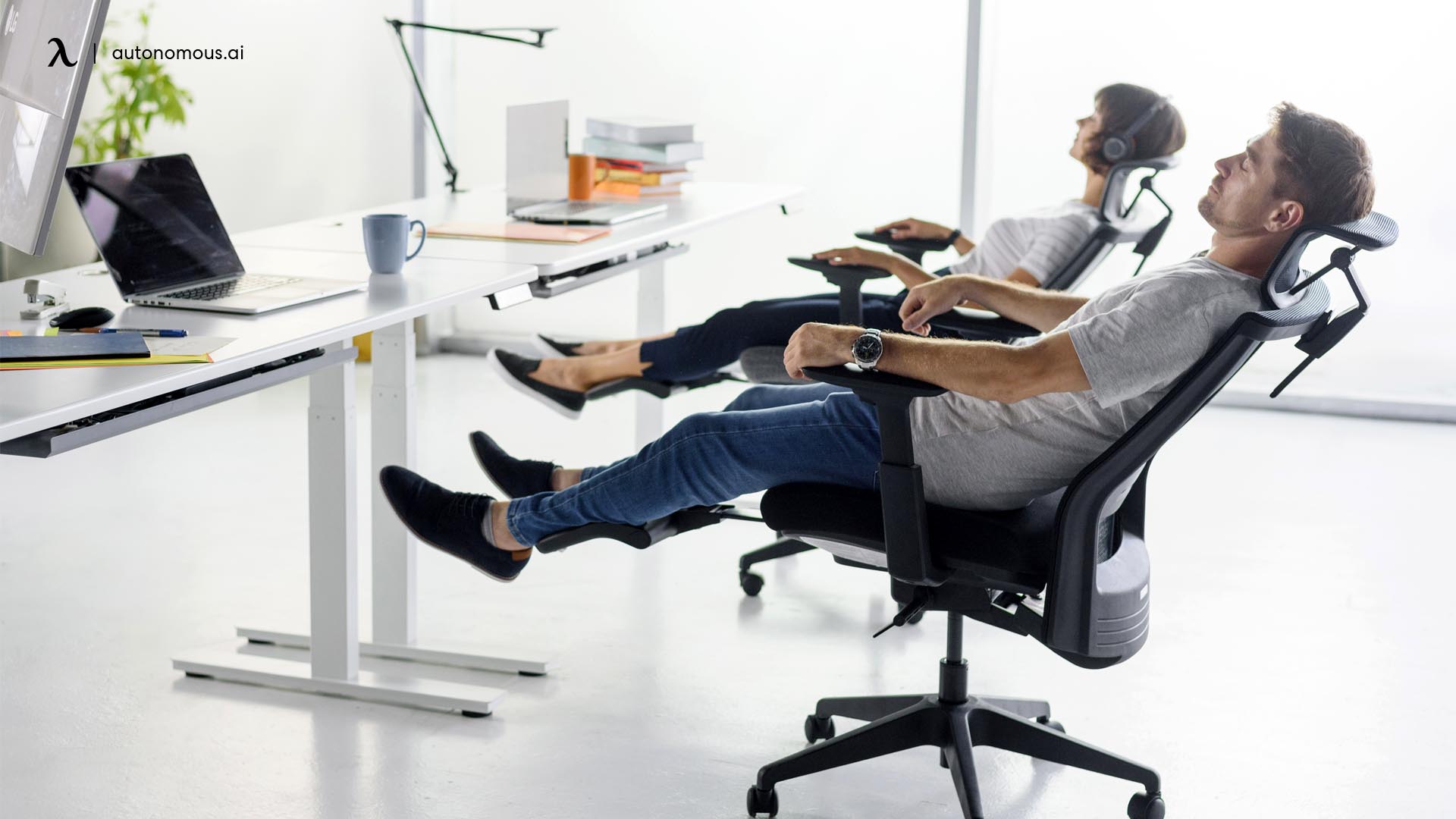
2. Use A Footrest Or A Low Platform
Propping one foot on a low stool or footrest while standing can help shift your pelvis and ease pressure on your spine. Alternate feet every 10–15 minutes to prevent fatigue on one side.
This small elevation helps tilt the pelvis forward slightly, reducing tension in the lower back pain from standing at work regularly.
3. Stand On A Soft Surface
If you’re standing on tile or concrete floors, consider using an anti-fatigue mat or a balance board. These are designed to cushion your feet, reduce pressure on your knees and hips, and encourage subtle active movement to engage your leg muscles gently.
It’s a small investment that can significantly reduce daily back pain from standing at work.

4. Wear Supportive Shoes
Footwear matters more than you think. Flat, unsupportive shoes often lead to feet and back hurt from standing at work by the afternoon. Avoid flat-soled shoes, high heels, or worn-out insoles. Instead, you should look for shoes with:
- Arch support
- Cushioned soles
- Shock absorption
- A snug, stable fit
If you can’t change your shoes (e.g., due to a uniform), high-quality orthotic inserts can still make a difference.
5. Stretch During The Day
Incorporating a few short stretching sessions between tasks or during breaks keeps your muscles limber and prevents tightness from settling in.
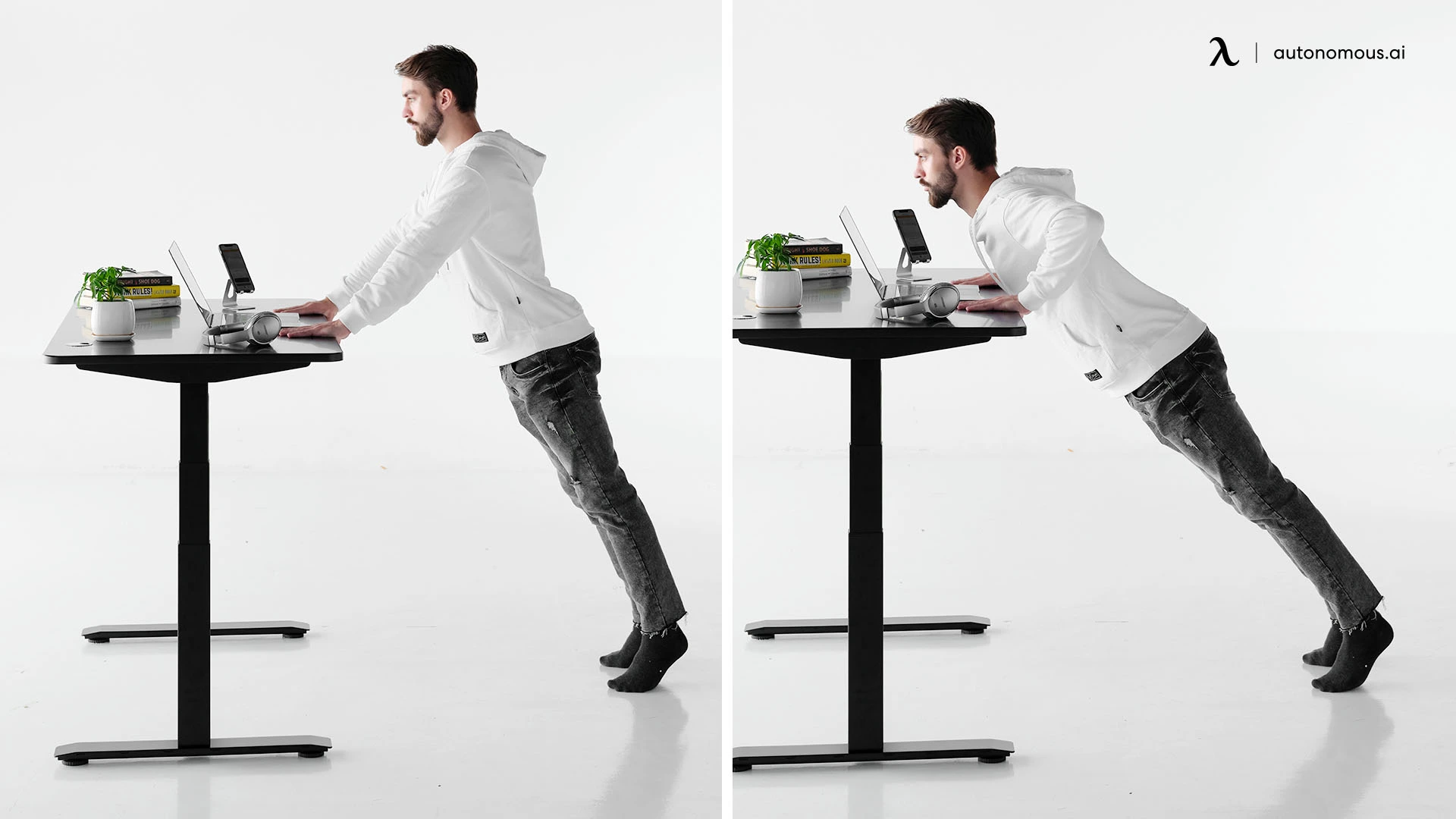
Workplace Adjustments That Help
Sometimes, it’s not just your habits, it’s your environment that’s working against you. Here are a few ergonomic changes that can reduce or prevent back pain from standing all day at work:
1. Use A Sit-Stand Workstation
A height-adjustable workstation with a high-back office chair with lumbar support and a standing desk allows you to switch between positions without interrupting your workflow. To better understand how a standing desk can help you stay balanced between sitting and standing, you can read our article about the benefits of a standing desk.
If you use one, make sure to adjust it so:
- Your elbows form a 90-degree angle when typing
- Your wrists remain flat and neutral
- Your screen is at or just below eye level
If you're standing still while doing manual work (e.g., prepping food or working with tools), consider using a raised surface to avoid bending forward repeatedly.
If you have already had your own standing desk setup, you may want to check out our guide on standing desk accessories to help you maximize the comfort and support from standing all day at work.
And while comfort is the main goal, there’s another small perk: standing can burn more calories than sitting. Curious how much? Here’s how standing desk burn calories and how it compares to sitting throughout the day.
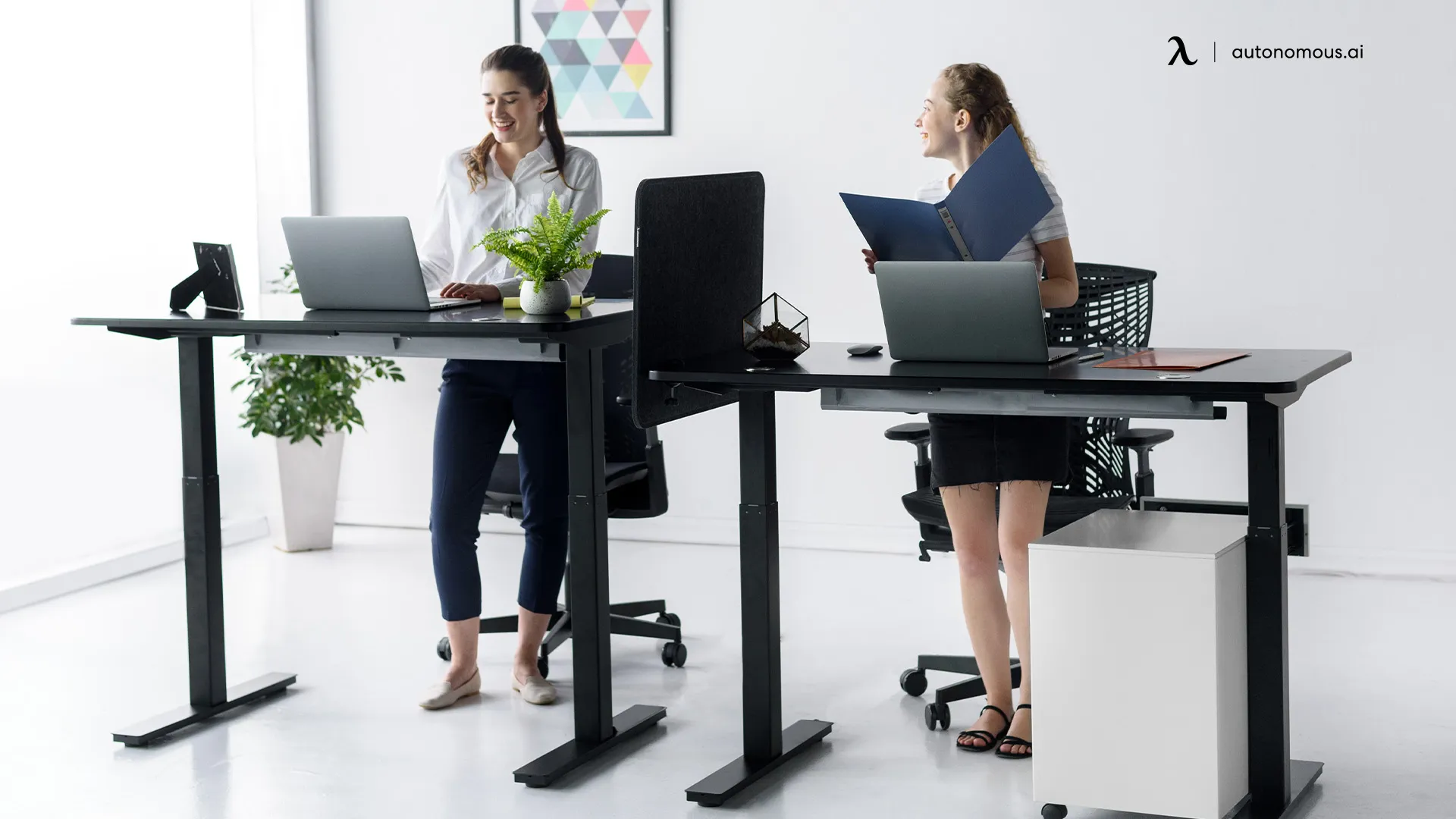
2. Add A Perching Stool Or Leaning Chair
If you don’t have the option to sit fully, an ergonomic stool, an orthopedic office chair, or an office chair for back pain can offer support while still allowing mobility.
These are especially helpful for tasks where you need to stay upright but want to take some pressure off your spine. If you are interested in investing in a high-quality office chair to help you maximize comfort, you can opt for an upper back pain office chair.
3. Adjust Monitor Or Work Height
If your workstation is too low or too high, it forces you into awkward postures. You may unknowingly hunch over, reach up, or crane your neck. Adjust your tools or desk height to keep everything within a natural range of motion.
If you are incorporating a standing desk in your workspace but still struggle to find the ideal height, you can read our guidelines on how high should a standing desk be.
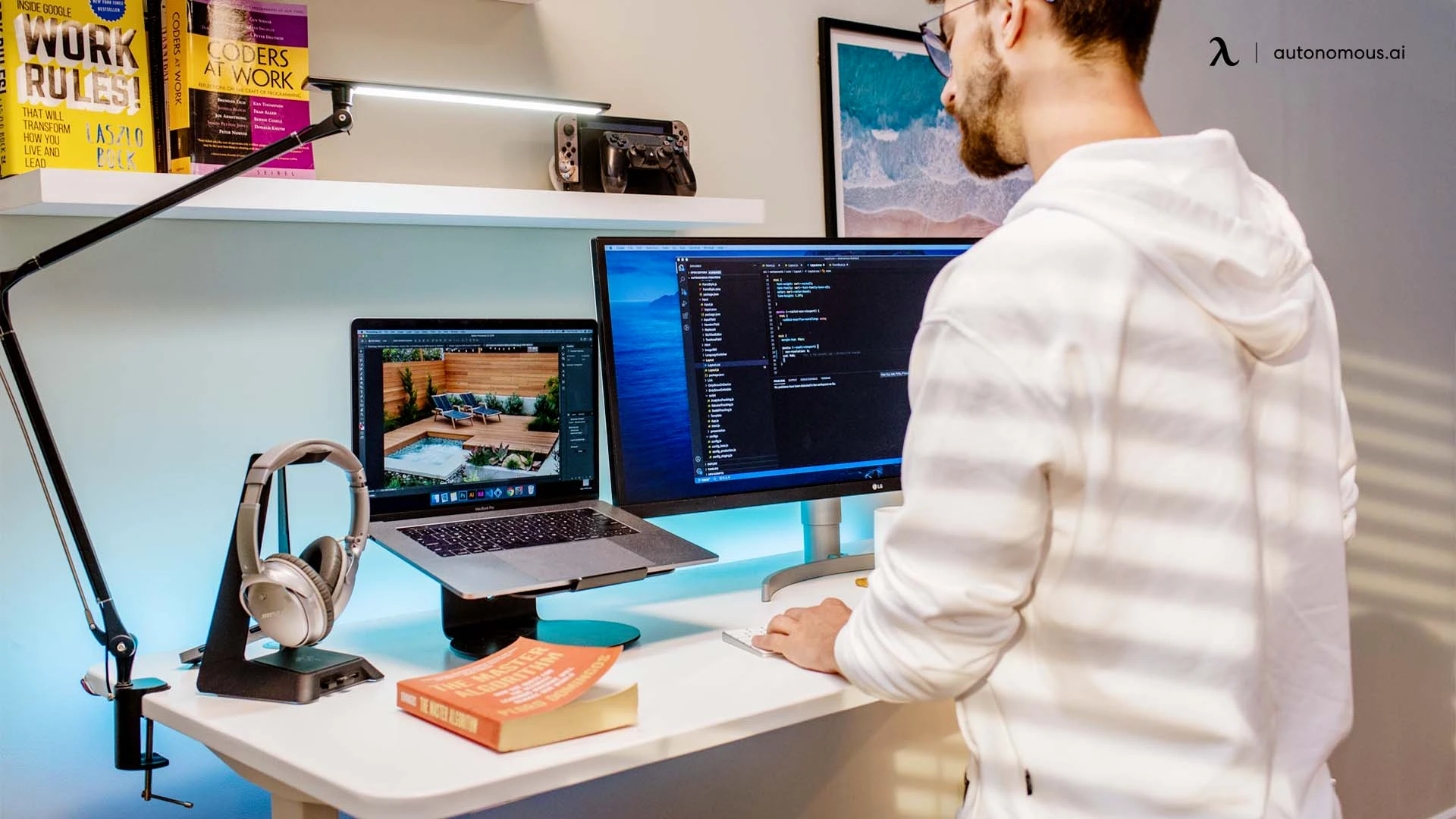
4. Organize Frequently Used Tools Within Reach
Whether it’s a mouse, register, keyboard, or instrument tray, make sure items you use often are within arm’s reach to avoid overreaching or twisting your torso constantly.
Overreaching causes poor posture and increases your risk of lower back pain from standing at work.
Stretches And Movements To Relieve Back Pain From Standing At Work
The body needs movement to recover from the back pain from standing at work and stay balanced. These simple stretches can be done at work or at home.
They help loosen tight muscles, improve circulation, and prevent stiffness from the back pain from standing at work.
1. Standing Backbend
- Stand with feet hip-width apart.
- Place your hands on your lower back for support.
- Gently arch your back, pushing your hips slightly forward.
- Look upward without straining your neck.
- Hold for 10–15 seconds, breathing deeply.
This counteracts the forward slouch and decompresses the lower spine.
2. Seated Spinal Twist
- Sit on a chair with both feet flat on the ground.
- Place your right hand on the back of the chair and twist your torso to the right.
- Keep your hips facing forward.
- Hold for 20–30 seconds and repeat on the other side.
This relieves tension in the mid-back and resets your spinal alignment.
3. Hamstring Stretch
- Place one heel on a low surface (like a stool or ledge).
- Keep your leg straight and hinge forward slightly from the hips.
- You should feel a gentle pull behind your thigh, not your lower back.
- Hold for 20 seconds and switch legs.
Tight hamstrings can pull on your pelvis, leading to lower back pain from standing at work, especially when standing for long periods.
4. Hip Flexor Stretch
- Step one foot forward into a lunge position.
- Lower your back knee (or keep it lifted if you prefer).
- Keep your torso upright and push your hips forward gently.
- You should feel a stretch in the front of your rear hip.
This helps open up muscles that shorten from sitting and overcompensate during long-standing periods.
5. Calf Raises and Ankle Rolls
Simple movements like lifting your heels and rolling your ankles in circles improve blood flow and reduce swelling, especially if you stand still most of the day.
If you are having a standing desk for your workstation, you can look for more standing desk exercises to help you relieve the tension in the back pain from standing at work.

When To See A Professional
If you've made adjustments to your routine, tried stretching, and improved your posture but the pain still lingers, it may be time to call in expert support.
Here are signs you should see a healthcare provider if your back pain from standing at work is getting worse:
- Persistent lower back pain from standing at work lasting more than 2–3 weeks: Occasional soreness is normal, but if your discomfort becomes a daily issue or doesn’t improve with rest, it deserves a closer look.
- Pain radiating down your leg or into your foot: This could signal nerve involvement, such as sciatica, which may require physical therapy or further evaluation.
- Tingling, numbness, or weakness in your limbs: These symptoms often mean nerves are being compressed or irritated, and early treatment helps prevent long-term damage.
- Trouble sleeping due to pain: If your back pain keeps you up at night or worsens when lying down, it could be more than muscle fatigue.
- Impact on daily life: When standing, walking, or even focusing at work becomes difficult because of back discomfort, don’t wait for it to pass—get it assessed.
You may be referred to a physical therapist, orthopedic specialist, or chiropractor, depending on your symptoms. They can pinpoint the cause of your pain, guide you through corrective exercises, and recommend personalized solutions.

FAQs
1. How do I stop my back from hurting when I stand all day at work?
Switch positions often, even if it’s just shifting your weight or walking a few steps. Use a footrest to alternate leg position, stand on a standing desk with an anti-fatigue mat, and wear supportive shoes. Throughout the day, stretch your hips, hamstrings, and lower back to reduce tension and keep circulation flowing.
If you are a beginner on the journey of incorporating a standing desk for your workspace, you can check out our guide on how to use a standing desk.
Not sure how often to switch? This guide on how often you should get up from your desk can help you plan better movement throughout the day.
2. How do you fix back pain from standing too long?
Start with gentle stretching to release tight muscles—backbends, hip flexor stretches, and hamstring stretches are especially helpful. Applying heat or a warm compress to the sore area can improve circulation and reduce discomfort.
Also, rest with your legs elevated to reduce pressure on your spine. If the pain persists, consider seeing a physical therapist for personalized guidance. You can consider upgrading to the best office chair for lower back pain if you need a long-term fix that doesn’t involve staying on your feet all day.
3. Is it better to stretch or rest a sore back?
Both play a role in recovery. Resting gives your back time to recover from strain, especially if you lie down in a position that reduces spinal pressure. But gentle stretching helps prevent stiffness and keeps muscles flexible. The key is balance—avoid complete inactivity, but don’t push through sharp or intense pain.
4. Can standing for 8 hours cause back pain?
Yes, especially if you're standing in one place without moving much. Long hours on your feet can lead to muscle fatigue, poor posture, and spinal compression. Over time, this can result in aching, stiffness, and even long-term strain on the lower back.
5. What are the best stretches to relieve standing-induced back pain?
Try standing backbends to open the lower spine, seated spinal twists to loosen the mid-back, hamstring stretches to ease tension in the legs and lower back, and hip flexor stretches to relieve lower back pain from standing at work in front of the hips. These movements help restore alignment and circulation.
6. When should I be concerned about back pain from standing?
If your feet and back hurt from standing at work every day, radiates down your leg, includes numbness or tingling, or affects your ability to sleep or perform daily tasks, it’s time to speak with a healthcare professional. Early evaluation can help prevent more serious issues.
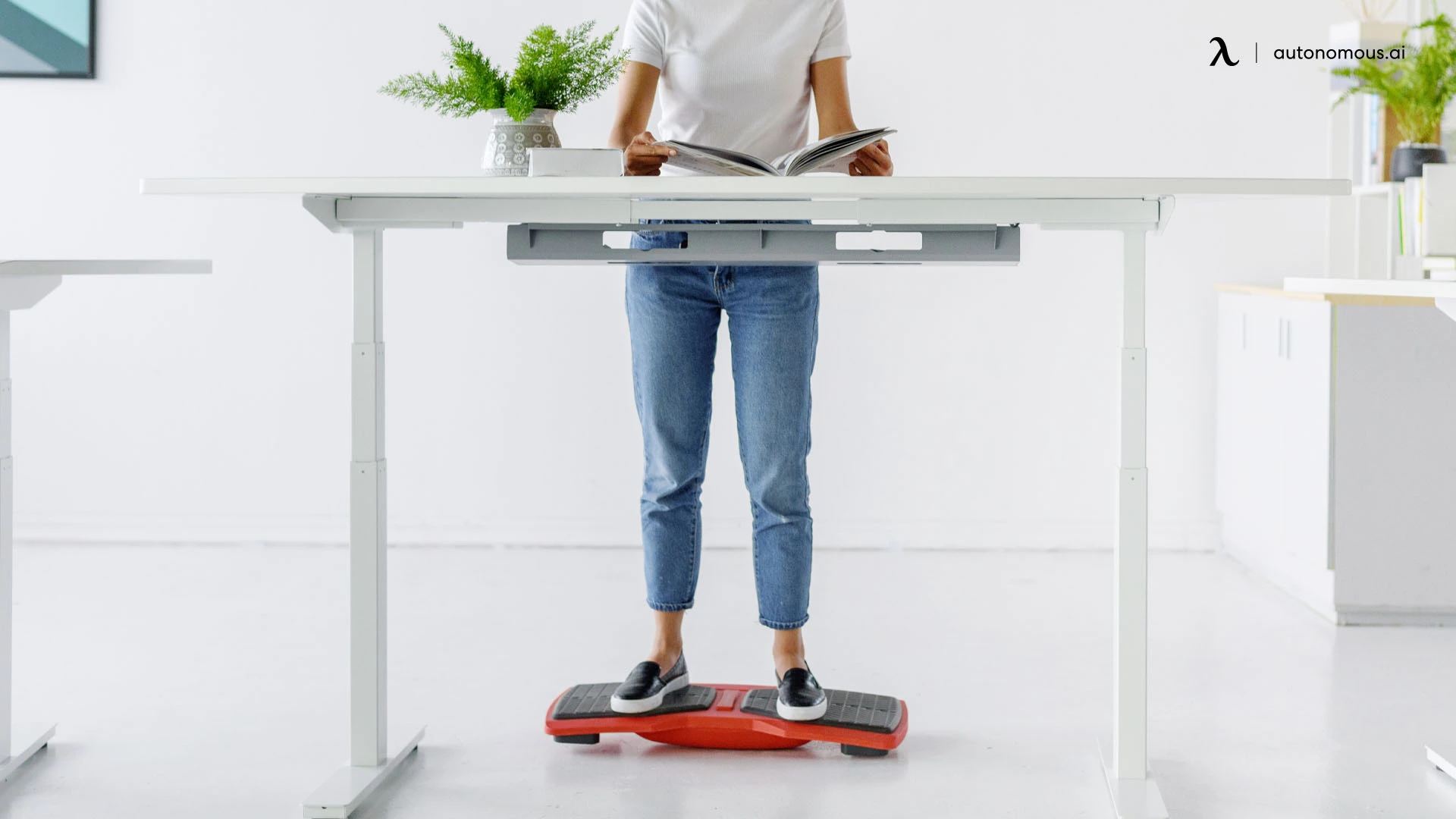
Conclusion: Your Body Knows Best—Listen to It
Standing is a natural part of daily life, and in the right doses, it can be great for your health. But when you’re on your feet for too long without proper support or movement, your body starts to feel the toll. That nagging ache in your lower back? It’s not something you have to live with.
By listening to your body’s signals and making small, intentional changes, like moving more often, wearing better shoes, using a footrest, or doing a few simple stretches, you can go from sore and stiff to strong and supported. And if your back is still protesting, don’t hesitate to ask for help. There’s no shame in needing a reset.
And if you're shopping for a desk specifically to help with your discomfort, this guide to choosing a standing desk for back pain breaks down what features actually make a difference. You can opt for more supportive options, like a mid-back office chair or a high-back office chair can offer much better spinal alignment than standard task chairs.
Your comfort, posture, and long-term wellness matter, especially in the workplace. Let’s give your back the support it deserves.
Spread the word
.svg)







